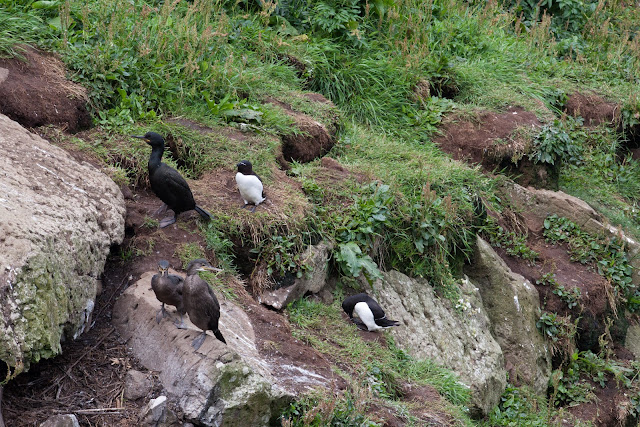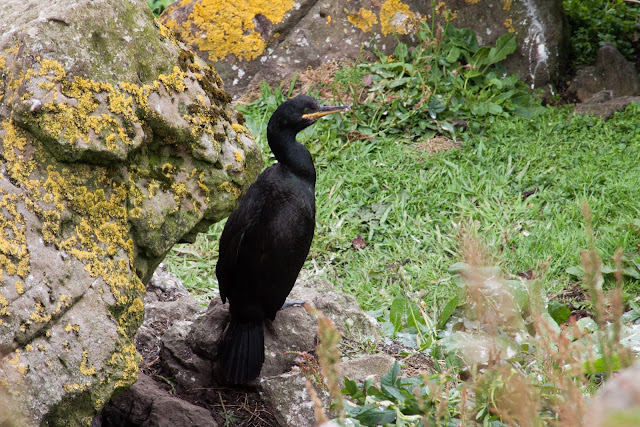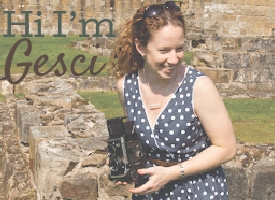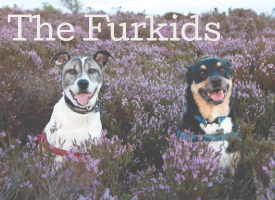We took the Wildlife Cruise, Treshnish Isles, and Staffa Tour offered by Gordon Grant Marine Boat Tours. It was an excellent choice, as the boat's crew was helpful and knowledgable and our group wasn't too big- 15 people. Our first stop after leaving Mull was Lunga, the largest of the Treshnish Isles and home to roughly 2000 puffins! (and thousands of other birds.)
The remains of the last homes on the island, abandoned in the mid-19th century.
This was the first path we took... see it?
Yeah. I was thankful I wore my wellies!
We came upon this cleft and I pulled out my telephoto lens-
Based on the chart on our boat, we're pretty sure these are Fulmars.
These guys are Shags. They have excellent hearing- every time I pressed my shutter they'd turn towards me!
The fulmar in the center was an argumentative guy. He was trying to pick fights with everyone!
Finally, a mom gets off a baby so I can see it!
Yeah, they were a noisy bunch!
Paul and I kept climbing the big hill, and ended up overlooking the long end of the island. 'Lunga' actually means "long island", and was named by the Vikings. It's got a large hill, but the rest of the island appears flat and low from the sea.
The edge of the flat area. It's just as cliff-y!
Another shag, with a nest!
I was wandering around, looking for puffins.
As I was photographing these birds, a couple told me about a cliff covered in "a million birds". I was intrigued, so I followed them over.
Puffins!
These are razorbills.
A-ha! The "million birds" wasn't that much of an exaggeration!!
This is Harp Rock, where 5000+ of these Guillemots live.
More babies!
Part II is mostly puffins- and they LOVE having their picture taken!





































That's a path!? Lol! Beautiful, amazing pictures as always.
ReplyDeletePuffins are seriously the cutest birds ever. I love them.
ReplyDeleteGreat shots, by the way. I love the one where it looks like two fulmar are yelling at each other.
That path reminds me of parts of the Yorkshire Three Peaks! Those photos of the birds with your telephoto lens are great. And, I love the puffins!
ReplyDeleteThis post is straight out of NatGeo.
ReplyDeleteThank you forr this
ReplyDelete